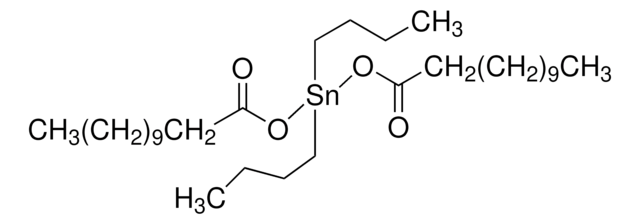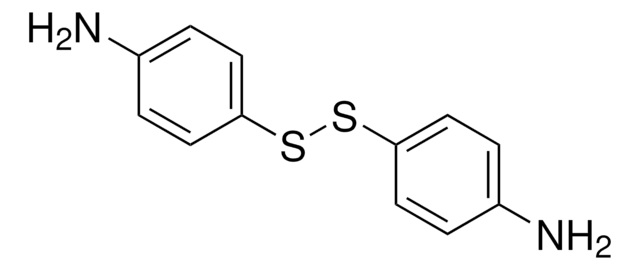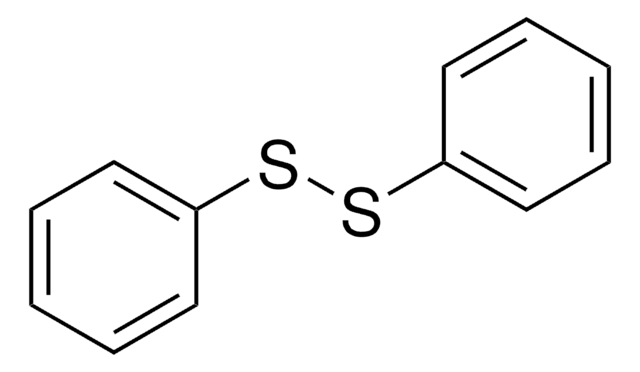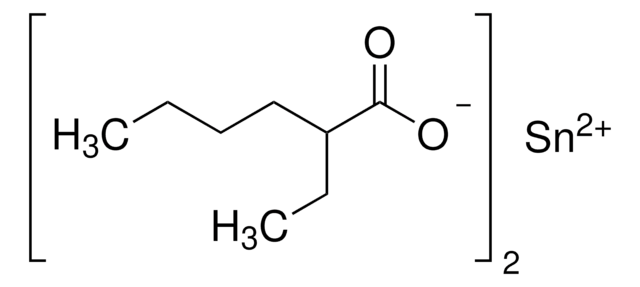Wichtige Dokumente
380474
2,2′-Dithiodiethanol
technical grade
Synonym(e):
2-Hydroxyethyldisulfid, Bis-(2-hydroxyethyl)-disulfid
About This Item
Empfohlene Produkte
Qualität
technical grade
Qualitätsniveau
Form
liquid
Brechungsindex
n20/D 1.57 (lit.)
bp
158-163 °C/3.5 mmHg (lit.)
mp (Schmelzpunkt)
25-27 °C (lit.)
Dichte
1.261 g/mL at 25 °C (lit.)
SMILES String
OCCSSCCO
InChI
1S/C4H10O2S2/c5-1-3-7-8-4-2-6/h5-6H,1-4H2
InChIKey
KYNFOMQIXZUKRK-UHFFFAOYSA-N
Suchen Sie nach ähnlichen Produkten? Aufrufen Leitfaden zum Produktvergleich
Verwandte Kategorien
Allgemeine Beschreibung
Anwendung
- A chain extender in the preparation of waterborne self-healing polyurethane, which is used in leather coating.
- As a precursor in the synthesis of multifunctional initiator, which is used in the preparation of star polystyrenes by atom transfer radical polymerization of styrene.
- A starting material to prepare a disulfide-based branching agent. This branching agent is used to synthesize highly branched poly(2-hydroxypropyl methacrylate).
Signalwort
Danger
H-Sätze
Gefahreneinstufungen
Acute Tox. 3 Oral - Eye Dam. 1
Lagerklassenschlüssel
6.1C - Combustible acute toxic Cat.3 / toxic compounds or compounds which causing chronic effects
WGK
WGK 3
Flammpunkt (°F)
233.6 °F - closed cup
Flammpunkt (°C)
112 °C - closed cup
Persönliche Schutzausrüstung
Eyeshields, Faceshields, Gloves, type ABEK (EN14387) respirator filter
Hier finden Sie alle aktuellen Versionen:
Besitzen Sie dieses Produkt bereits?
In der Dokumentenbibliothek finden Sie die Dokumentation zu den Produkten, die Sie kürzlich erworben haben.
Kunden haben sich ebenfalls angesehen
Artikel
Over the past two decades, the rapid advance of controlled living polymerization (CLP) techniques.
Global Trade Item Number
| SKU | GTIN |
|---|---|
| 380474-5KG | |
| 380474-250ML | 4061831960419 |
| 380474-1L | |
| 380474-50ML | 4061831960464 |
| 380474-5L |
Unser Team von Wissenschaftlern verfügt über Erfahrung in allen Forschungsbereichen einschließlich Life Science, Materialwissenschaften, chemischer Synthese, Chromatographie, Analytik und vielen mehr..
Setzen Sie sich mit dem technischen Dienst in Verbindung.











